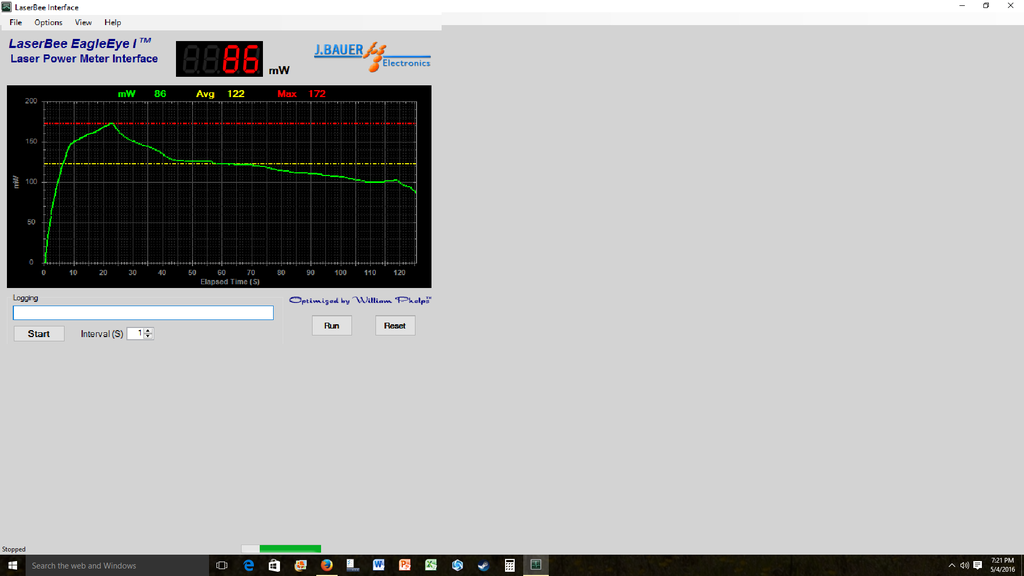So what do I have to look forward to with my Opto 75mw 532? It might have 20 minutes run time tops on it. Its in its box with batteries out and in my dresser draw going on maby 11 months since I bought it. Should I start playing with it now that I can before its to late?


TLDR: Your laser/crystals won't "go bad" from lack of use. They probably won't fail even if you drop the laser because of the way they're glued and whatnot. But sometimes crystals do fail and that can be bad.
The crystals won't "go bad". Nd:YAG and KTP, the crystals in most 532nm handhelds, are not hygroscopic and are (for our intents and purposes) chemically inert. The biggest failure risks are the same as for any laser diode, i.e. dirt contaminating the optics, excessive heat/current, crossed wires, the usual. The crystal set will not work if physically disrupted, but I've dropped my 532 lasers onto concrete dozens of times and have yet to kill a set.
The rest of the post is long but it concerns a safety issue peculiar to DPSS lasers.
However, sometimes crystal sets do fail and this presents a serious safety risk that you might not expect: The laser no longer emits green light and appears "dead",
but in fact it is still LIVE and DANGEROUS because the pump diode generally still works even though the crystal set does not! In this case, the unit can emit 808nm IR at dangerously high power — 100+ mW for a "301" type laser, ranging to multiple WATTS for larger DPSS units. The pump diode in my LaserBTB 532nm is about 1W, easily powerful enough to cause permanent blindness. This particular laser has an IR filter on the output, so a crystal failure would be safe — HOWEVER, most DPSS lasers you encounter will LACK this filter!
1064nm can also be emitted if the damage involves the KTP only, but leaves the YAG component in place and therefore still functional. 1064nm is totally invisible regardless of power. While 808nm emission generally has a high divergence because of the way it's focused into the YAG, the 1064nm divergence can be low if the collimating optics are still in place.
The danger is made much worse because the IR emission will be very faint, almost invisble, despite the high power levels. My LaserBTB 808nm is basically a pump diode with no crystal set. It gives about 800mW but the dot is a very faint, dark, purplish-red, even in dim ambient light. A 1mW 650nm appears many times brighter... but 1mW of 650nm won't set cardboard on fire, and if you get it in your eye it generally won't blind you. 800mW of 808nm IR will readily do both. A 50mW 520 or 532nm laser dot is brilliantly bright, imagine what it would look like at 800mW and that's how bright the 808nm dot really is.
The danger is made even WORSE because common safety glasses, the kind you wear to protect your eyes from 532nm, will NOT stop IR light. This is a problem with non-IR-filtered lasers in general, whether they work normally or not. Unless specifically rated with IR (808nm
and 1064nm) optical densities and labelled as such, then your safety glasses will pass the IR at full power, as if the glasses were not even there. If you didn't know better, you might think you're protected and that could be a devastating mistake.
Post was not originally meant to be long I figured that needs to be mentioned since we do have a lot of new members since I was last really active, and it's imperative that laser users know about it in order to protect themselves and stay safe

I didn't know any of this stuff when I joined LPF and it was some months before I found out.








